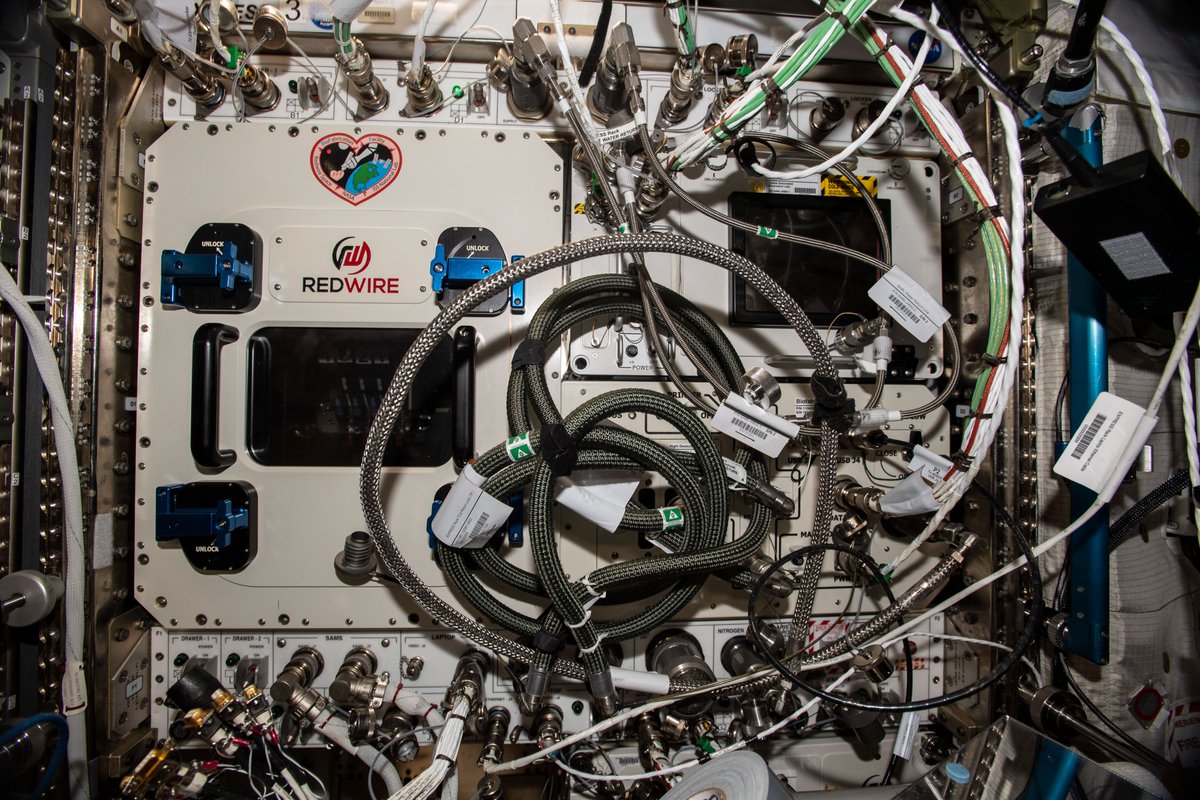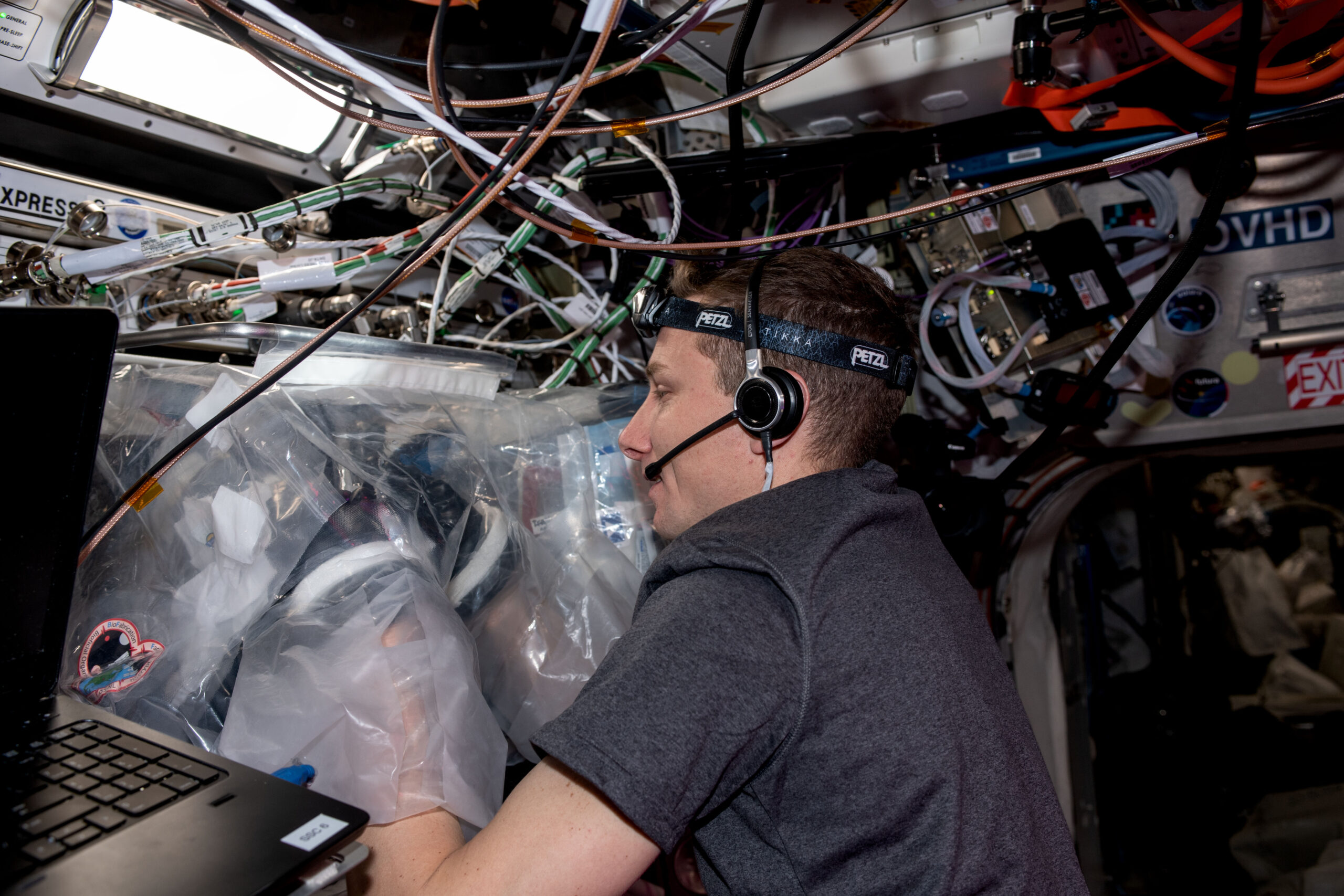In a major stride for space exploration and biotechnology, Redwire (NYSE: RDW) has successfully 3D bioprinted the first human knee meniscus onboard the International Space Station (ISS). Using its upgraded BioFabrication Facility (BFF), Redwire successfully created complex tissue structures in microgravity. Notably, the print was part of the BFF-Meniscus-2 Investigation with the Uniformed Services University of the Health Sciences Center for Biotechnology (4D Bio3). The investigation aims to explore and adapt groundbreaking biotechnologies for potential benefits to US military service members and humanity.
Operating in the microgravity conditions of the ISS, the BFF used a bioink made up of living human cells. The 3D bioprinter meticulously layered these cells to form the intricate tissue structure of the meniscus. After the successful initial bioprinting, the newly formed meniscus was immediately transferred to Redwire’s Advanced Space Experiment Processor (ADSEP). There, the tissue was cultured in a tightly controlled environment that simulated the necessary conditions for cellular growth. The ADSEP’s advanced features allow for precisely regulating factors like temperature, humidity, and nutrient supply over 14 days.
Following this two-week cultivation, the tissue solidified and matured, evolving from a mere scaffold to a functional bioengineered tissue. Prepared for its journey back to Earth, the meniscus was stored securely onboard the SpaceX Crew-6 mission, which splashed down off the coast of Florida on September 4, 2023.
 Redwire’s upgraded BioFabrication Facility (BFF) was installed in the ISS. Image courtesy of Redwire.
Redwire’s upgraded BioFabrication Facility (BFF) was installed in the ISS. Image courtesy of Redwire.Space milestone
This pioneering effort has a rich backstory. It began with research and development to explore the potential of microgravity environments for bioprinting. Here’s how the journey unfolded, highlighting key milestones and 4D Bio3’s integral role in shaping the future of in-space biotechnology.
In May, Redwire and the ISS National Laboratory set the stage for what would come. The knee meniscus, a critical component of one of the body’s most complex joints, is frequently subjected to tears, requiring medical interventions that can increase the risk of arthritis or knee replacement. The quest for a better solution to this widespread issue led Redwire to the ISS.
“The BFF is a game-changing technology that could have significant implications for the future of human health and patient care on Earth,” said Rich Boling, Redwire Vice President.
Redwire’s upgraded BFF was launched to the ISS in November of 2022. Thanks to microgravity, there was an unparalleled opportunity for bioprinting tasks that would be nearly impossible to perform under Earth’s gravitational pull. This is where 4D Bio3’s expertise in exploring promising biotechnologies became a crucial asset.
According to Boling, the decision to print meniscus as the facility’s inaugural project was strategic. The meniscus is “avascular,” lacking in blood vessels, which tends to be a limiting factor in large-scale 3D printing. “So right when you print it, you’re already closer to human tissue than you would be if you started out trying to print a heart,” he added.
This recent endeavor also built on prior successes. Redwire’s BFF had previously printed cardiac tissue and a meniscus-shaped scaffold that did not include living cells in 2019. The upgraded BFF used in the current mission benefited from improved temperature control and imaging systems. This step-by-step method helped the team improve their control over the printing process.
Fast-forwarding to July, Redwire took a giant leap by initiating operations for the BFF-Meniscus-2 investigation, as it would be the first time a full human knee meniscus was bioprinted in space.
“Demonstrating the ability to successfully print complex tissue such as this meniscus is a major leap forward toward the development of a repeatable microgravity manufacturing process for reliable bioprinting at scale,” said Redwire Executive Vice President John Vellinger.
Military impact
This achievement can potentially revolutionize the treatment of meniscal injuries, one of the most common injuries among military service members. According to 4D Bio3, meniscal injuries are over ten times more common in the US military than civilians. With a rate of 8.27 injuries per 1000 people each year as the leading cause of knee arthroscopy among active-duty service members, over 8,000 meniscal procedures are performed annually within the Department of Defense. Despite its frequency, progress in treating meniscal injuries has lagged behind other areas in tissue engineering. This is why 4D Bio3 is collaborating with Redwire in this initiative, aiming to develop a 3D bioprinted in vitro meniscus tissue model that can help treat this type of injury.
Conducted by NASA astronauts Frank Rubio, Warren “Woody” Hoburg, and Stephen Bowen, along with United Arab Emirates (UAE) astronaut Sultan Al Neyadi, the investigation shines a light on 4D Bio3’s commitment to advance biotechnological solutions to benefit warfighters and civilians alike.
 NASA astronaut Warren “Woody” Hoburg works on BFF-Meniscus-2 to 3D print a meniscus. Image courtesy of NASA.
NASA astronaut Warren “Woody” Hoburg works on BFF-Meniscus-2 to 3D print a meniscus. Image courtesy of NASA.Between the foundational work that began in May and the subsequent milestones reached in July, Redwire and 4D Bio3 have created a timeline representing more than just technological innovation. Inherent in the bioprinted meniscus is hope for improved healthcare solutions on Earth and in space.
The success of the BFF-Meniscus-2 Investigation is just a glimpse of what’s to come. BFF is part of Redwire’s growing portfolio of technologies, having developed 20 research facilities for the ISS, with ten currently operating on the station. In July, Redwire announced plans to open a 30,000-square-foot, state-of-the-art microgravity payload development facility with a mission operations center at the Novaparke Innovation & Technology Campus in Floyd County, Indiana. The company intends to increase the production of critical technologies enabling human spaceflight missions and commercial microgravity research and development in low Earth orbit (LEO). Building on this ambition, the brand’s upcoming SpaceX CRS-29 resupply mission to the ISS in November 2023 will feature research payloads focused on pharmaceutical drug development and regenerative medicine, including experiments in bioprinting cardiac tissue.
Subscribe to Our Email Newsletter
Stay up-to-date on all the latest news from the 3D printing industry and receive information and offers from third party vendors.
You May Also Like
Gorilla Sports GE’s First 3D Printed Titanium Cast
How do you help a gorilla with a broken arm? Sounds like the start of a bad joke a zookeeper might tell, but it’s an actual dilemma recently faced by...
Nylon 3D Printed Parts Made More Functional with Coatings & Colors
Parts 3D printed from polyamide (PA, Nylon) 12 using powder bed fusion (PBF) are a mainstay in the additive manufacturing (AM) industry. While post-finishing processes have improved the porosity of...
$25M to Back Sintavia’s Largest Expansion of Metal 3D Printing Capacity Since 2019
Sintavia, the digital manufacturing company specializing in mission-critical parts for strategic sectors, announced a $25 million investment to increase its production capacity, the largest expansion to its operations since 2019....
Velo3D Initiates Public Offering in a Bid to Strengthen Financial Foundations and Drive Future Growth
Velo3D (NYSE: VLD) has been among a number of publicly traded 3D printing firms that have attempted to weather the current macroeconomic climate. After posting a challenging financial report for 2023,...































